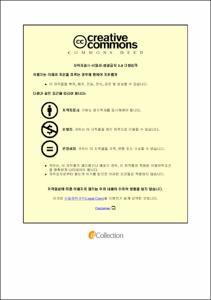컨테이너 운전기사에 대한 컨테이너 관리 전가 문제 및 개선방안에 관한 연구
- Abstract
- Currently, international trade using containers is active. The shipper who loads his cargo into the container pays for container cleaning when signing a contract with the shipping company. All container cleaning costs are paid regardless of the condition of the container. However, the container received by the container driver has many damage containers. Damage containers are contaminated with various wastes, dust, and oil or contain creatures such as ants, spiders and snakes. When the driver brings the damage container to the shipper, the shipper will request a container replacement. It takes more than 30 minutes to 5 hours for the driver to replace the container, and the replaced container can also be dirty, so clean it driver self. A driver is not a cleaning job, and knowledge of cleaning will be insufficient. In some cases, containers are dropped or injured while cleaning them. Land logistics accounts for the largest proportion of logistics in Korea, and the working environment of container drivers needs to be improved in this problem. Since no previous research has been conducted on container cleaning and repair, it could be the starting point for the research topic.
This study conducted interviews and questionnaires at Busan-si, Pohang-si and Gwangyang-si targeting container drivers. The driver's working characteristics were identified, and the ratio of clean and dirty containers was investigated. Using survey results and SPSS programs, Descriptive statistics, Frequency analysis, One-sample T-test, One-way ANOVA, Chi-square test. As a result of the analysis, most container drivers get work from transportation companies or arrangers. And among the assigned Emily Containers, there were more damage containers than clean containers. In the survey, 89% of drivers said they had cleaned the container. It takes 32.52 minutes to clean the container and 49.56 minutes to repair it. Cleaning labor is also transferred when returning the Emily Container to the terminal after use. Broom, silicone gun, torch, etc. used for container cleaning are all purchased and used by the driver himself. When the One-sample T-test and the Chi-square test were conducted, the results differed from region to region, which will require future research tasks.
The solution to the problem should be well managed by the shipping company, the original container owner. It will be necessary to increase the size of the repair and cleaning plant in the terminal and put in a lot of cleaning experts. The expansion of water washing plants will also help revitalize the economy. More systematic management and research are also needed on container management issues. Finally, the state or local governments should make regulations and actively inform the system.
- Issued Date
- 2022
- Awarded Date
- 2022. 2
- Type
- Dissertation
- Publisher
- 부경대학교
- Affiliation
- 부경대학교 대학원
- Department
- 대학원 국제통상물류학과
- Advisor
- 조찬혁
- Table Of Contents
- Ⅰ. 서론 1
제 1 절 연구의 배경 및 목적 1
1. 연구의 배경 1
2. 연구의 목적 4
제 2 절 연구의 구성 7
Ⅱ. 이론적 배경 8
제 1 절 컨테이너의 상용화 8
1. 컨테이너 산업의 기원 8
2. 우리나라 컨테이너 물동량 9
제 2 절 공컨테이너의 일반적인 관리 10
1. 공컨테이너의 흐름 10
2. 데미지컨테이너의 관리 대상 11
제 3 절 선행연구 13
Ⅲ. 연구모형의 설계 및 연구방법 15
제 1 절 연구모형 15
제 2 절 연구방법 16
1. 연구대상 16
2. 연구방법 16
3. 사전인터뷰 17
4. 설문지 문항의 구성 19
5. 분석방법 21
Ⅳ. 실증분석 22
제 1 절 현황분석 22
1. 인구사회학적 특성 22
2. 근로특성 24
3. 근로강도 25
4. 노선 고정 정도 26
5. 컨테이너 관리 전가 경험 유무 27
6. 컨테이너 청소 및 수리에 소요되는 시간 27
7. 컨테이너 관리가 전가되는 시기 28
8. 컨테이너 관리를 전가시키는 주체 29
9. 데미지컨테이너를 처리하는 방법 30
10. 데미지컨테이너를 청소 또는 수리하는 장소 31
11. 컨테이너를 청소 및 수리하지 않았을 때 불이익 32
12. 컨테이너 청소 및 수리를 했을 때의 보상 여부 33
13. 선사, 터미널, 화주별 청소 강도의 차이 34
제 2 절 일표본 T검정 35
1. 컨테이너의 상태 35
2. 컨테이너 청소 종류별 비율 35
3. 컨테이너 수리 종류별 비율 36
제 3 절 일원배치 분산분석 37
1. 지역별 보상의 종류 및 요구의 정도 37
1) 기술통계 37
2) 로버스트 검정 39
3) 사후검정 40
2. 월수입별 배정받은 컨테이너의 상태 43
1) 기술통계 43
2) ANOVA 및 로버스트 검정 44
3) 사후검정 45
제 4 절 교차분석 47
1. 지역별 그룹 47
2. 하루에 받는 컨테이너 개수별 그룹 52
3. 청소 소요시간별 그룹 54
Ⅴ. 결론 56
제 1 절 연구결과 56
제 2 절 연구의 시사점 59
제 3 절 개선방안 60
제 4 절 연구의 한계점 62
참고문헌 63
부록 65
감사의 글 70
- Degree
- Master
- Appears in Collections:
- 대학원 > 국제통상물류학과-FTA비즈니스전공
- Files in This Item:
-
-
Download
 컨테이너 운전기사에 대한 컨테이너 관리 전가 문제 및 개선방안에 관한 연구.pdf
기타 데이터 / 1.88 MB / Adobe PDF
컨테이너 운전기사에 대한 컨테이너 관리 전가 문제 및 개선방안에 관한 연구.pdf
기타 데이터 / 1.88 MB / Adobe PDF
-
Items in Repository are protected by copyright, with all rights reserved, unless otherwise indicated.